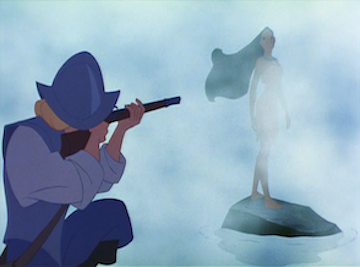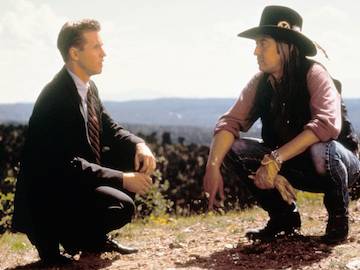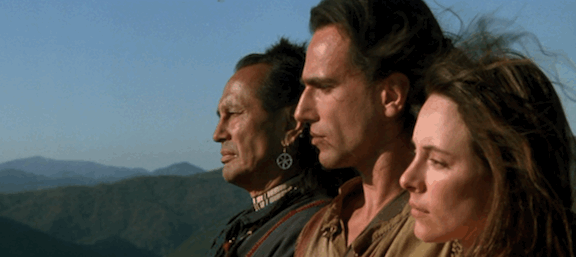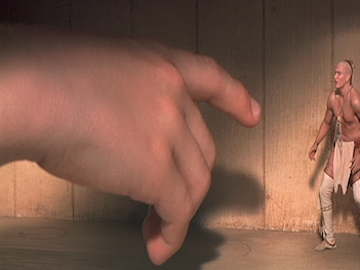AS A COWLITZ Indian child, white-skinned and New Jersey-born, I grew up fielding the question, “How much Indian are you?” without any sense of its meaning. Once I was old enough to know that my mother was Indian and my father wasn’t, I began responding “Half.” It wasn’t until my teenage years that I would ask my mother for the details of my ethnic breakdown. She pulled an index card out of her desk drawer. I knew that I was Cowlitz, Polish, Irish, and Ukrainian, but the card was full of surprising facts as well. What did it mean to be Welch? French?
The truly shocking information the card carried was my Indian blood quantum. I didn’t know that was the term for the sum of the fractions next to Cowlitz and Cascade. This was the “How much?” people had prodded me about, and it wasn’t the half I’d assumed. “What are you, a quarter?” people would toss out at times. It wasn’t that. The sum of the Cascade and Cowlitz fractions made an awkward hybrid. I decided it would be nobody’s business.
I grew up in the time of Native American proverb posters and mass-produced dream catchers. Disney’s Pocahontas was released in 1995, when I was ten. I had outgrown my Barbies then, but I still added a Pocahontas doll to my retired collection. I knew that she was a fullblood. She communicated with animals and never wore a jacket. She painted with all the colors of the wind. If someone had asked me to explain the difference between my plastic doll and me, I might have said that she was the real Indian and I was the fake one.
In the nineties, Americans loved a certain kind of Indian. Dances with Wolves (1990), a box office triumph after a flub-filled filming process, is a fictional account of Lieutenant John Dunbar (Kevin Costner) and his process of “going Indian” after befriending a band of Lakota neighbors. While the film succeeds in rendering the Lakota characters as fully-developed people with motivations, concerns, humor, and the individual personality variations often afforded only non-Indian characters, at the end the filmmakers made their fictionalized Native band vanish. Viewers are informed via epilogue:
“Thirteen years later, their homes destroyed, their buffalo gone, the last band of free Sioux submitted to white authority at Fort Robinson, Nebraska. The great horse culture of the plains was gone and the American frontier was soon to pass into history.”
The Hollywood Indian certainly hadn’t disappeared. Following the success of Dances with Wolves, the Western came back into style, with depictions of Indians from earlier eras projected onto screens worldwide. Black Robe (1992), The Last of the Mohicans (1992), Geronimo: An American Legend (1994), Squanto: A Warrior’s Tale (1994), and other films depicted confrontations between indigenous communities and colonizers. Although progress had been made since the time of John Ford westerns, with Native characters played by Native actors and increased attention paid to character development rather than poorly-sketched “savages,” still, these films relegated Native peoples to the past.
Thunderheart (1992) glances back only two decades into American Indian history for its fictionalization of the 1973 Wounded Knee occupation on Pine Ridge Reservation.Questions of blood quantum and Lakota identity arise for Ray Levoi (Val Kilmer), a white-identifying FBI agent who is assigned to the reservation because of his Lakota ancestry. Levoi’s blood quantum is of great concern to him and to those around him: we learn immediately that Levoi’s Lakota blood quantum is one-eighth, and a blood chasm forms between him and tribal cop Walter Crow Horse (Graham Green), who is full-blooded Lakota and was born and raised on the reservation. Blood quantum functions as shorthand for potency of identity. By the end, Levoi is seeing visions, some ancestral memory having been shaken from his bones. In Hollywood, 119 minutes is ample time to turn a character from community outsider to medicine man, because “realness” is nothing more than imagery and romance.
No film of the nineties does this more explicitly than The Last of the Mohicans (1992), the most recent of a series of adaptations of James Fenimore Cooper’s 1826 novel and a robust performer at the box office. At the end of the director’s cut of the film, Chingachgook (Russell Means), his adopted son Hawkeye (Daniel Day Lewis), and Hawkeye’s romantic partner Cora look out over a great expanse of virgin land:
Chingachgook: The frontier moves with the sun and pushes the red man of these wilderness forests in front of it until one day there will be nowhere left. Then our race will be no more, or be not us.
Hawkeye: That is my father’s sadness talking.
Chingachgook: No, it is true. The frontier place is for people like my white son and his woman and their children. And one day there will be no more frontier. Then men like you will go, too. Like the Mohicans. A new people will come. Work. Struggle. Some will make their life. But once, we were here.
Although the dying out of Native populations might make for the tidy completion of narratives, and the idea of a vanishing race has developed an unsavory romantic appeal, the truth is that colonization didn’t wipe out North America’s indigenous peoples. The 2010 Census reported that 5.2 million people identified as American Indian. Currently, there are 566 federally recognized tribes. Images have emerged from Hollywood that reinforce stereotypes of Native peoples as suspended in time, but tribal cultural practices continue to develop in a natural correspondence with the passage of time.
Many of these tribes have come to use blood quantum, the degree of Indian ancestry expressed fractionally, as a consideration when defining their membership. Contemporary determinations of blood quantum often look back to base rolls, records of tribal membership, often created by non-Indians. Determinations of blood quantum are made by establishing proximity to the ancestors listed on these rolls. The Dawes Rolls are the best-known base rolls, listing people accepted by the Dawes Commission between 1898 and 1914 as members of the Cherokee, Creek, Choctaw, Chickasaw, and Seminole Tribes. For my tribe and others in the region, the Roblin Rolls form a base roll.Similar to the Dawes Rolls, these listings of families were created in 1919 by Indian agent Charles Roblin to record names of Indians in Western Washington. Base rolls can be wrought with problems: commissioners denied some families’ enrollment, while other families resisted giving their names to the government. Some registrants died before their names could appear. The records are handwritten, aged, and littered with inaccuracies.
Blood quantum is not a traditional indigenous value of North America; ancestral fractionation was introduced by the British settlers, first appearing in colonial policy in a 1705 Virginia statute barring a “mulatto,” or “the child of an Indian and child, grandchild or great grandchild of a negro” from holding public office. An 1866 Virginia law defined “Indian” as “every person, not a colored person, having one-fourth or more of Indian blood.” This mathematical determination undermined ancient systems that determined kinship without measuring a family’s metaphorical blood volume.[i]
The Cowlitz Tribe no longer uses blood quantum as a criterion of membership, and I am proud of my tribe for this. Currently, the tribe’s enrollment requirements require that only newborns (under age one) who are shown to be lineal descendants of Cowlitz members can be enrolled in the tribe. Those tribes that do use blood quantum as a requirement of enrollment are doing the challenging work of determining their membership, and I lack both the great wisdom and immense foolishness to suggest policy changes for other tribes.
Although my tribe doesn’t require me to demonstrate a minimum degree of ancestry, acquaintances’ innocent questions of “How much?” seem to gesture toward a desire to get at the truth about how far I am from ancestor plucked from Kevin Costner’s friendly and doomed band: a real Indian.
“How much Indian are you?”, however well-intentioned, implies that alive within me is only a tiny piece of the free, noble Indian that passed on long ago, a remnant from which I am far removed. The questions, individually, are borne from a place of curiosity, but the questions have embedded in a time when blood quantum was used to rob indigenous peoples of rights and, ultimately, lead to our being defined out of existence. Pocahontas, in the final scene of the Disney re-creation, sends John Smith back to England and tells him, “No matter what happens, I’ll always be with you. Forever.” What happens: the viewer is spared the discomfort of a mixed-race happy ending. What happens, historically: Pocahontas is captured by the English, marries John Rolfe, has a son, travels to England to serve as the Crown’s symbol of the civilization and Christianization of the “heathens,” and dies there from tuberculosis at the age of twenty-two. The Disney version, in which Pocahontas never fit her feet into heeled shoes and refused to leave the woods (until the afterthought of a straight-to-video sequel), persists.
Released on the heels of Pocahontas was the 1996 adaptation of The Indian in the Cupboard, in which nine-year-old Omri (Hal Scardino) receives a magical cupboard and key that enable him to make his toys come alive. A frozen Indian warrior, after being locked in the cupboard, becomes animated, turns into Little Bear (Litefoot), an Iroquois visitor from the year 1761. Upon meeting his tiny visitor, Omri quickly wants to know, “Are you a real Indian?” Soon enough, the examination complete, Omri marvels, “You are so real,” to which Little Bear replies, “I am. Yes. Are you?”
In The Indian in the Cupboard, a “real Indian” can only be unearthed by the turning of a magical key. At the film’s end, Omri reads to his class from a story inspired by the preceding events:
“I will never know where he is or how he is, but now I don’t worry about him. I think Little Bear will have lots of children and he will teach them everything. He will always take care of his people. That’s all.”
Little Bear is a character placed in a nation and generation facing unfathomable change: the French and Indian War, a European conflict that spilled over into North America, transformed relations among European powers and the Native nations caught up in the conflict.North American lands passed from one foreign conquerer to another. Omri told Little Bear to expect changes: “You are always a great people. But it’s not always so good.
If the story were to continue for Little Bear and his descendants, they would indeed exist in the same world in which Native people are dismissed as less legitimate if they are of mixed ancestry, if they are phenotypically inconsistent with stereotypes, or if they fail to meet other flimsy social criteria. I cringe every time I hear “part Indian,” feeling my arm sliced off at the shoulder. When I refuse to answer, “How much Indian are you?” I am reserving the right to keep myself whole. When I say that my blood quantum is personal and not a topic I discuss with strangers, it is not because I am ashamed. It’s not you, and it’s not me—it’s three hundred years of statistical genocide, and I don’t have to participate. Nobody puts this Indian in the cupboard.
Spruhan, Paul. A Legal History of Blood Quantum in Federal Indian Law to 1935. South Dakota Law Review 51.1: 2006.







Well said!
Also a Cowlitz member, a Taitnapam.
Very well said. It’s unfortunate we still have to educate others as to the history of the Tribe, and of Natives in general. It’s not about doing the right thing; it’s about doing the right thing over and over and over and…
I am not being critical, but your assessment of Cowlitz enrollment is a tad simplistic. I’m guessing you know this, but I can explain this more fully if you like…
I have Native American ancestry too, my great grandma was a Din’e Navajo. She married my grandfather when he was working over in Mexico in 1850 I’m 4 generation . I honour and respect my Navajo heritage.
This is an amazing article Emily, I am so proud to hear you say that, it always irks me when I feel a hint of Native American pride I am asked how much Native America am I and why I just look white. Even though I too refuse to talk about “how much” Cherokee blood I have I still know that without them I would not here. Even though I am robbed of knowing most of my Native heritage aside from my genealogy book and bits and pieces of information about the Cherokee tribe. I am proud to still know that I am related to such amazing people no matter what my skin color is.
Pingback: Why I‘ve left the Tribe - Citizen's Intel
Pingback: 25 Great Nonfiction Essays You Can Read Online for Free - Isabella Media Inc
I really enjoyed your article. Congrats on the content. 72530495